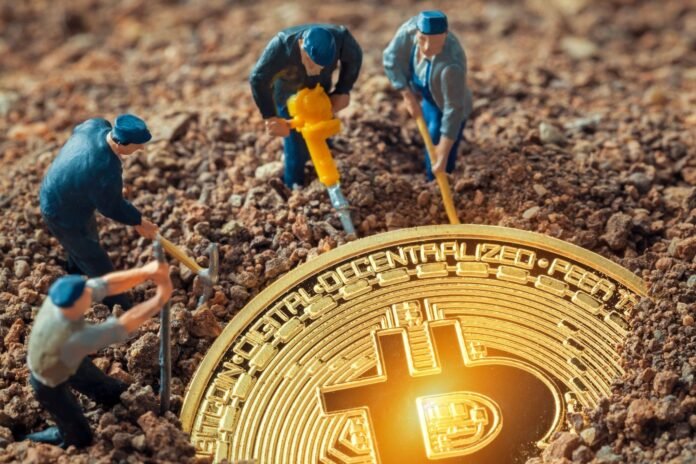Cryptocurrency mining might sound like a modern-day treasure hunt, and in a sense, it is! Instead of shovels and pickaxes, miners use powerful computers to solve complex puzzles. But what are they mining for? Let’s dive in and uncover the mystery of crypto mining, step by step.
Key Takeaways
- Cryptocurrency mining is the process of validating transactions and adding them to the blockchain.
- Miners are rewarded with cryptocurrency for their efforts.
- Mining requires substantial computational power and energy.
- Profitability depends on factors like mining difficulty, hardware, and electricity costs.
What Is Crypto Mining?
At its core, cryptocurrency mining is the process of validating transactions in a decentralized network. When you make a transaction using Bitcoin, Ethereum, or another cryptocurrency, it doesn’t go through a central bank. Instead, miners verify these transactions and ensure everything adds up. Once validated, the transaction is added to the blockchain, a transparent and tamper-proof ledger.
Think of miners as digital accountants, tirelessly crunching numbers to keep the system running smoothly. But why would they do this? The answer is simple: rewards. Miners are compensated with cryptocurrency and transaction fees for their hard work.
How Does Crypto Mining Work?
Cryptocurrency mining involves solving mathematical puzzles called proof-of-work (PoW). These puzzles are intentionally complex to ensure the network’s security. Here’s a step-by-step breakdown:
- Transaction Bundling: Multiple transactions are grouped into a block.
- Puzzle Solving: Miners compete to solve the block’s cryptographic puzzle. This requires brute computational force.
- Validation: The first miner to solve the puzzle broadcasts the solution to the network.
- Consensus: Other miners verify the solution. If correct, the block is added to the blockchain.
- Reward: The successful miner earns cryptocurrency and transaction fees.
What if Two Blocks Are Mined at the Same Time?
Sometimes, two miners solve the puzzle simultaneously and broadcast their blocks. This creates a temporary fork in the blockchain. The network resolves this by continuing to mine, and eventually, one branch becomes longer than the other. The shorter branch is abandoned, and its transactions are returned to the pool to be mined again. This “longest chain rule” ensures consistency.
What Is the Mining Difficulty?
Mining difficulty refers to how hard it is to solve the cryptographic puzzle. Networks adjust difficulty regularly to maintain a consistent block creation time—usually about 10 minutes for Bitcoin. Higher difficulty means miners need more computational power, making it harder to earn rewards.
Types of Cryptocurrency Mining
Mining isn’t one-size-fits-all. Here are some popular methods:
- CPU Mining: Uses standard computer processors. It’s mostly obsolete due to low efficiency.
- GPU Mining: Relies on graphics cards. Popular for altcoins like Ethereum (before its switch to proof-of-stake).
- ASIC Mining: Uses specialized hardware designed for mining. It’s efficient but expensive.
- Cloud Mining: Rent mining power from remote data centers. It’s hassle-free but can be less profitable.
- Mining Pools: Groups of miners combine resources to solve puzzles faster. Rewards are shared proportionally.
What Is Bitcoin Mining and How Does It Work?
Bitcoin mining specifically refers to mining the Bitcoin cryptocurrency. It operates on the PoW mechanism we discussed earlier. Bitcoin’s mining reward is halved roughly every four years (a process called “halving”), making it increasingly scarce.
For Bitcoin, mining has evolved into a competitive, high-stakes industry, with massive operations running in data centers worldwide. Individual miners often join pools to compete effectively.
Is Crypto Mining Profitable?
Profitability depends on several factors:
- Hardware: High-end GPUs and ASICs are expensive but more efficient.
- Electricity Costs: Mining is energy-intensive, so cheap electricity is crucial.
- Cryptocurrency Prices: Higher prices make mining more profitable.
- Network Difficulty: Rising difficulty can reduce profitability.
While mining can be lucrative, it’s a high-risk investment. Fluctuating crypto prices and increasing energy costs can impact earnings.
Closing Thoughts
Cryptocurrency mining is a fascinating blend of technology, economics, and cryptography. It’s the backbone of decentralized networks, ensuring they remain secure and transparent. While profitable for some, it’s not without challenges—rising costs, competition, and environmental concerns are significant factors to consider.
So, whether you’re a curious enthusiast or a potential miner, understanding the mechanics and implications of crypto mining is essential. Who knows, you might just strike digital gold!



